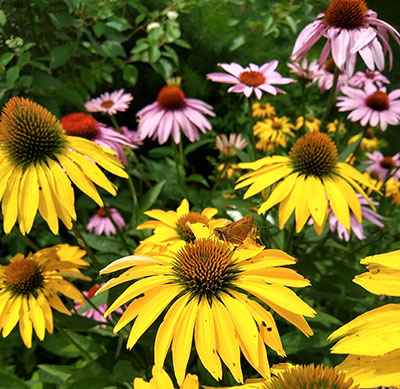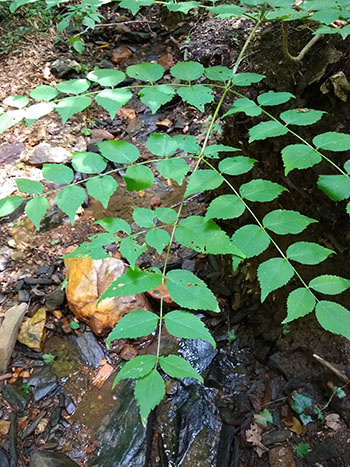![Cercis canadensis ‘NC2016-2’ [Flame ThrowerⓇ] is a cultivar of native eastern redbud, a midsize understory tree with heart-shaped leaves and bright pink or purple spring blooms.](https://www.scottarboretum.org/wp-content/uploads/2021/07/Cercis-canadensis-_NC2016-2_-EH-3.jpg)
Plants of the Week: July 26
Guest Author: Ellie Hollo
![Cercis canadensis ‘NC2016-2’ [Flame ThrowerⓇ] is a cultivar of native eastern redbud, a midsize understory tree with heart-shaped leaves and bright pink or purple spring blooms.](https://www.scottarboretum.org/wp-content/uploads/2021/07/Cercis-canadensis-_NC2016-2_-EH-3.jpg)
Cercis canadensis ‘NC2016-2’ [Flame ThrowerⓇ] is a cultivar of native eastern redbud, a midsize understory tree with heart-shaped leaves and bright pink or purple spring blooms. This cultivar was developed by the JC Raulston Arboretum in Raleigh, North Carolina. Flame ThrowerⓇ has bold multi-colored foliage starting out with brilliant red new leaves, fading gradually to golden-green on older leaves. This tree is a showy centerpiece for your garden, and the eye-catching foliage and blooms guarantee a year-round spectacle. You can check out Scott Arboretum’s Flame ThrowerⓇ redbuds in the back of the Terry Shane Teaching Garden opposite the Cut Flower Garden. Photo credit: E. Hollo

Echinacea purpurea, coneflower, is a nativeperennial in the eastern and central United States. Its large, mid-summer blooms attract butterflies as well as a wide variety of pollinators and its straight, upright structure fits well in any cottage or pollinator garden. The numerous cultivars of coneflower can be found at local garden centers and nurseries making it an easy native plant to add to your garden. Stop by the Scott Entrance Garden or the BioStream to see the yellow ‘Leilani’ and pink ‘Rubinstern’ coneflower cultivars. Photo credit: E. Hollo

If you’ve gone walking recently in Crum woods (or really in any park in Philly, like the Wissahickon), chances are good you’ve seen Aralia spinosa, Devil’s walking stick. This native shrub is best known for its massive, spiky, compound leaves, and thorny stems. The leaves on Devil’s walking stick are actually the largest compound leaves in North America! It grows on the edges of woodlands or fields and along stream beds in part shade or full sun. Its showy white flowers bloom in late summer, and turn into compact clusters of black berries, making this plant attractive to birds and pollinators.
Devil’s walking sticks are easy to transplant or grow from seed. It has few pest or disease problems; however, it does self-seed rapidly, so if you add this to your garden, keep an eye out for the seedlings or you will soon have a nice thicket of Devil’s walking stick. Photo credit: E. Hollo





Robert Roggeveen
Posted at 11:00h, 04 AugustThe Mt. Cuba Center has a good research on Echinaceas fro the Mid-Atlantic region that may be of interest.
https://mtcubacenter.org/trials/echinacea-mid-atlantic-region/
What a lovely Cercis canadadensis. I seem to have room only for a Cericis chinensis ‘Dom Egolf” I received a while ago as a member dividend from the Arnold Arboretum. it is an outstanding bloomer, but without the remarkable foliage of the Cercis in your article.
My younger daughter was graduated from Bryn Mawr, her husband from Haverford. She was accepted at Swarthmore. So… one we do get COVID in hand, no excuse for not making the 4 hour trip from central Connecticut.